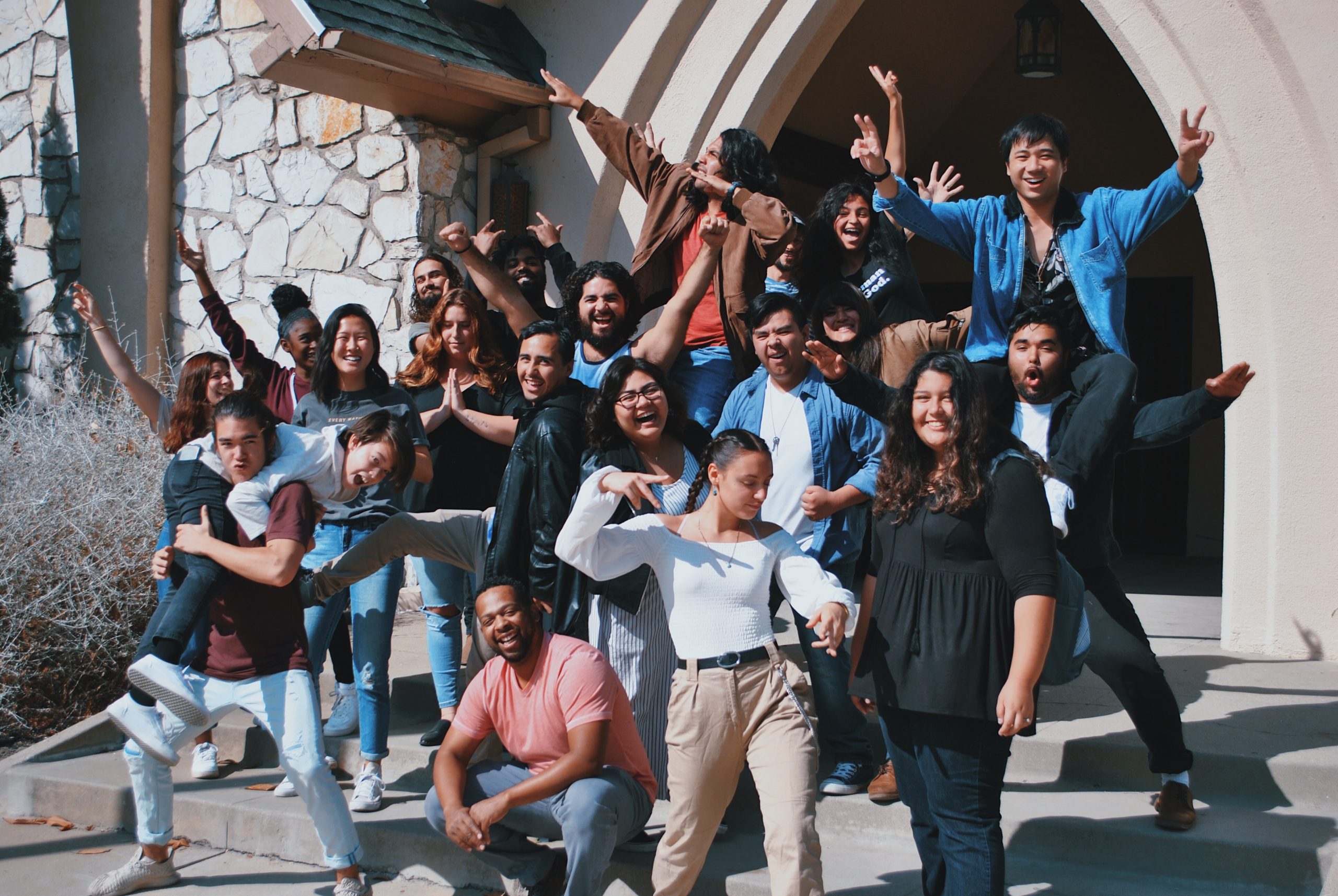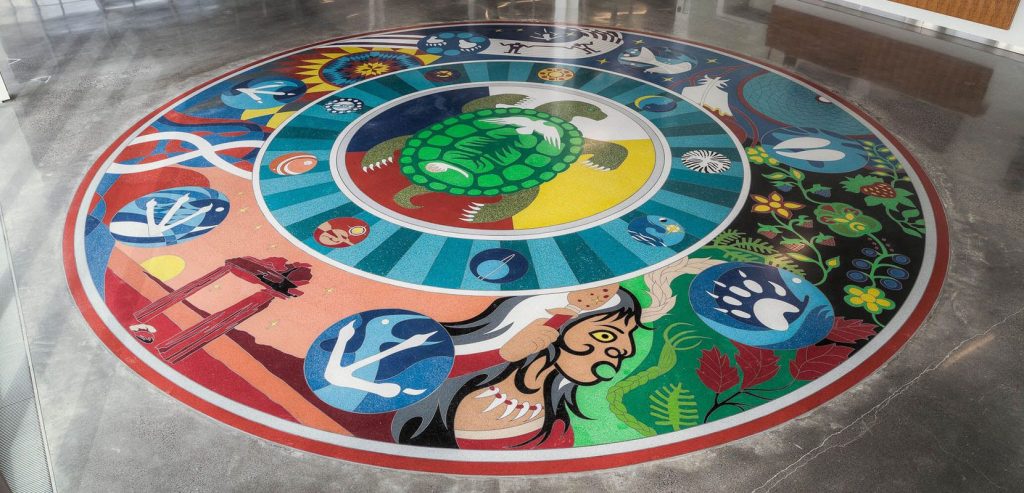6
A cross-cultural classroom caters to the needs of people with many cultures, languages and socioeconomic backgrounds. The diverse classroom model believes that culture aids people in understanding one another and helps us navigate our understanding of each other.
Everything we do is viewed through the lens of internalized norms and biases. Similarly, individuals behave and think in regular activities from the perspective of the culture they belong to. Thus, an individual can address cultural constraints through human-centred designs. What is human-centered design?
…it is based on a philosophy that empowers an individual or team to design products, services, systems, and experiences that address the core needs of those who experience a problem.
– DC Design[1]

This section will examine our ways of communicating with people and facilitating them on a global scale. Techniques in inclusive communication will be addressed for a more empathetic virtual community.
As we go through each concept, we will better understand and be aware of inclusiveness while also learning how to practice and promote it. We will increase our knowledge and awareness of equity, diversity and inclusivity through recognizing our own unconscious biases. This exploration will establish an environment that welcomes various perspectives and supports expression in a safe space.
The following practices will be used to guide our actions and decisions:
- Create a welcoming, supportive and inclusive atmosphere that encourages all students to interact.
- Encourage behaviours that promote cultural understanding, respect, acceptance and celebration of diverse cultures, beliefs and ideas.
- Develop skills that will help us succeed in a multicultural setting.
In this chapter you’ll explore
- Principles of inclusion & diversity
- Inclusivity strategies in teaching
- Tools to utilize while exploring opportunities for personal reflection and growth
- Resources and tools for teachers and students that support diversity and inclusion

Source: Seneca College, 2019, CC BY-NC-SA
Diversity
Having a diverse culture means valuing individuals’ right to identify as people of different races, colours, ages, genders, beliefs, ethnicities, cultural backgrounds, marital and family statuses, economic circumstances, ideas, expressions, experiences, skills and capabilities.Diversity describes the ability of individuals, groups and organizations to be different and yet similar. Organizational diversity depends on the representation of multiple perspectives within a group.
“Diversity is being asked to the party. Inclusion is being asked to dance.”
Vera Myers (https://www.vernamyers.com/)
Inclusion
Equity
Engagement
Here are some guidelines and principles for engaging learners and promoting inclusivity in the classroom to encourage engagement, encourage inclusivity and establish a positive learning environment:
- Respect: open-minded understanding among individuals and groups; we create a “safe space” for everyone to contribute without judgment
- Purpose: each classroom must build a community that promotes cooperation and respect
- Cooperation: in a classroom community, collective contribution enhances individual success
- Freedom from discrimination: overcome unconscious bias and build a safe community where everyone may work together, like in the examples included in this video from Kim Scott and Trier Bryant.
- Expression of ideas: support diverse views sensitively and respectfully and raise awareness of diverse viewpoints and engagement through education.[2]
Cultural Dimensions Can Help Us Understand Cultures Better
Just as individuals have identities, so do nations and cultures. Cultural anthropologist Geert Hofstede created a list of cultural dimensions in the early 1980s. Here is more information on Geert Hofstede’s cultural dimensions:[3]
Power Distance
→ Ask yourself: What visual markers of authority should I use? What taxonomies will my audience recognize and accept?
Individualism vs Collectivism
→ Ask yourself: How do I show evidence of success in society? What motivates my users to make decisions?
Femininity versus Masculinity
→ Ask yourself: What voice and tone are appropriate for my audience? Are competition and comparison a core part of the user experience?
Uncertainty Avoidance
→ Ask yourself: Does my interface encourage browsing and wandering, or targeted search and drill-downs?
Long- versus Short-Term Orientation
→ Ask yourself: Does my content prioritize short- or long-term engagement? How do my content and visual identity treat family?
Indulgence versus Restraint
→ Ask yourself: Is happiness part of your experience? Are vices hinted at, ignored or commented on openly?
Everyone knows what a shoe is, but we all have a different vision of this. In the end, what we determine to be a shoe is not the same as what someone else might think. Like students: as much as we may think we know the students, they all have a different story.
We must be mindful of the assumptions we make to avoid false categorizations and generalizations. Openness embodies diversity and inclusion. Be sure to cultivate an atmosphere that encourages new perspectives and approaches.

Respect, Compassion and Justice
Below is a list of points to consider for engagement:
- Recognize that each person has distinct and specific needs in the classroom.
- Respect each person’s right to express and present themselves in terms of religion, culture, ethnicity, sexual orientation, gender identity and physical and mental capability.
- Encourage inclusiveness by modifying procedures, activities and surroundings as needed.
- Focus on the individual’s abilities without making assumptions or assigning labels.
- Incorporate diversity throughout all means of communication.
- Provide attention, respect and justice to everybody.

Image Tips
When creating material for diverse cultures, keep image selections in mind. Images of individuals in swimwear at the beach, for example, may not be suitable in all countries due to cultural, religious or geographic reasons.
Consider how a person is portrayed in a photograph. Although it may seem apparent, when selecting imagery for a certain culture, be sure that the visuals you choose correctly reflect people in that culture. Diversity should be displayed throughout your presentations so all feel welcome and can imagine themselves within the situation described.
Diversity and Inclusion: Eight Best Practices for Changing Culture
Here are a few highlights on inclusive practices from Sharon Florentine, CIO:[4]
Establish a sense of belonging for everyone.
Empathetic leadership is key.
Inclusion is ongoing — not one-off training.
Maximize joy and connection, minimize fear.
Forget “fit” and focus on helping individuals thrive.
Activity
Key Takeaways: Terms and Concepts
- Race, faith and intersecting identities
- Dialogue, restoration and reflection
- Understand identities and incorporate this into engaging content
- Define, speak in simple terms, say it more than one way, repeat
- Create opportunities for the type of meaningful engagement that drives impact in learning
- Ensure equal access for students/learners
Resources & Tools
Getting into college is, for disadvantaged students, only half the battle. Anthony Abraham Jack, assistant professor at the Harvard Graduate School of Education, reveals how and why they struggle and explains what schools can do differently if these students are to thrive. He urges us to grapple with a simple fact: access is not inclusion, in the video, On Diversity: Access Ain’t Inclusion[Video]
International students bring expectations of academic culture that are often not compatible with U.S. academic culture; watch Teaching International Students: Academic Integrity [Video].
Practicing Inclusivity – Tips, rituals, and prompts for leading a more inclusive team
Cards for Humanity: A practical tool for inclusivity: two random cards are dealt, a person and a trait. Your challenge: work out how you can meet their needs.
Iowa State University has a page on student engagement techniques
Here are some free stock resources if you need imagery:
References & Case Studies
How to promote academic integrity in remote learning
Supporting International Students in the Online Environment
A Guide to Cross-Cultural Design
- Design, D.C. (2017, August 14). What is human-centered design? DC Design. Retrieved November 30, 2021, from https://medium.com/dc-design/what-is-human-centered-design-6711c09e2779 ↵
- Lombardo, G. (2021, June 23). A guide to cross-cultural design — By Senongo Akpem. DeMagSign. Retrieved November 30, 2021, from https://medium.com/demagsign/a-guide-to-cross-cultural-design-by-senongo-apkem-368c90de1b76 ↵
- The Mind Tools Content Team. Hofstede's cultural dimensions: Understanding different countries. From MindTools.com. Retrieved December 16, 2021, from https://www.mindtools.com/pages/article/newLDR_66.htm ↵
- Florentine, S. (2019, February 14). Diversity and inclusion: 8 best practices for changing your culture. CIO. Retrieved November 30, 2021, from https://www.cio.com/article/3262704/diversity-and-inclusion-8-best-practices-for-changing-your-culture.html ↵

